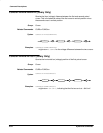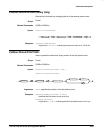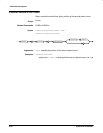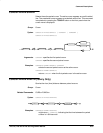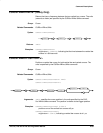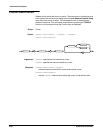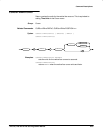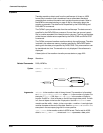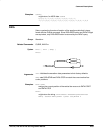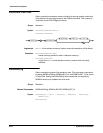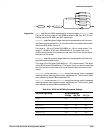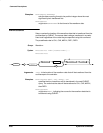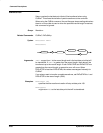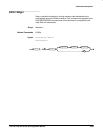
Command Descriptions
Syntax and Commands
2Ć62
CURVe
Transfers waveform data to and from the oscilloscope in binary or ASCII
format. Each waveform that is transferred has an associated waveform
preamble that contains information such as data format and scale. Refer to
the WFMPre command starting on page 2Ć164 for information about the
waveform preamble. The data format is specified by the DATa:ENCdg and
DATa:WIDTH commands.
The CURVe? query transfers data from the oscilloscope. The data source is
specified by the DATa:SOUrce command. If more than one source is speciĆ
fied, a commaĆseparated list of data blocks is returned. The first and last data
points that are transferred are specified by the DATa:STARt and DATa:STOP
commands.
The CURVe command transfers waveform data to the oscilloscope. The data
is stored in the reference memory location specified by DATa:DESTination
starting with the data point specified by DATa:STARt. Only one waveform can
be transferred at a time. The waveform is only displayed if the reference is
displayed.
A description of the waveform transfer process starts on page 2Ć22.
Waveform
DATa, WFMPre
CURVe { <Block> | <asc curve> }
CURVe?
CURVe
<Space>
?
<asc curve>
<Block>
<Block> is the waveform data in binary format. The waveform is formatted
as: #<x><yyy><data><newline> where <x> is the number of y bytes. For
example, if <yyy> = 500, then <x> =3.<yyy> is the number of bytes to
transfer. If width is 1, then all bytes on the bus are single data points. If width
is 2, then all bytes on the bus are 2Ćbyte pairs. Use the DATa:WIDth comĆ
mand to set the width. <data> is the curve data. <newline> is a single byte
newline character at the end of the data. See the GETWFM.C or GETWFM.BAS
examples in the accompanying disk for more specifics.
<asc curve> is the waveform data in ASCII format. The format for ASCII
data is <NR1>[,<NR1>...] where each <NR1> represents a data point.
Group:
Related Commands:
Syntax:
Arguments:



